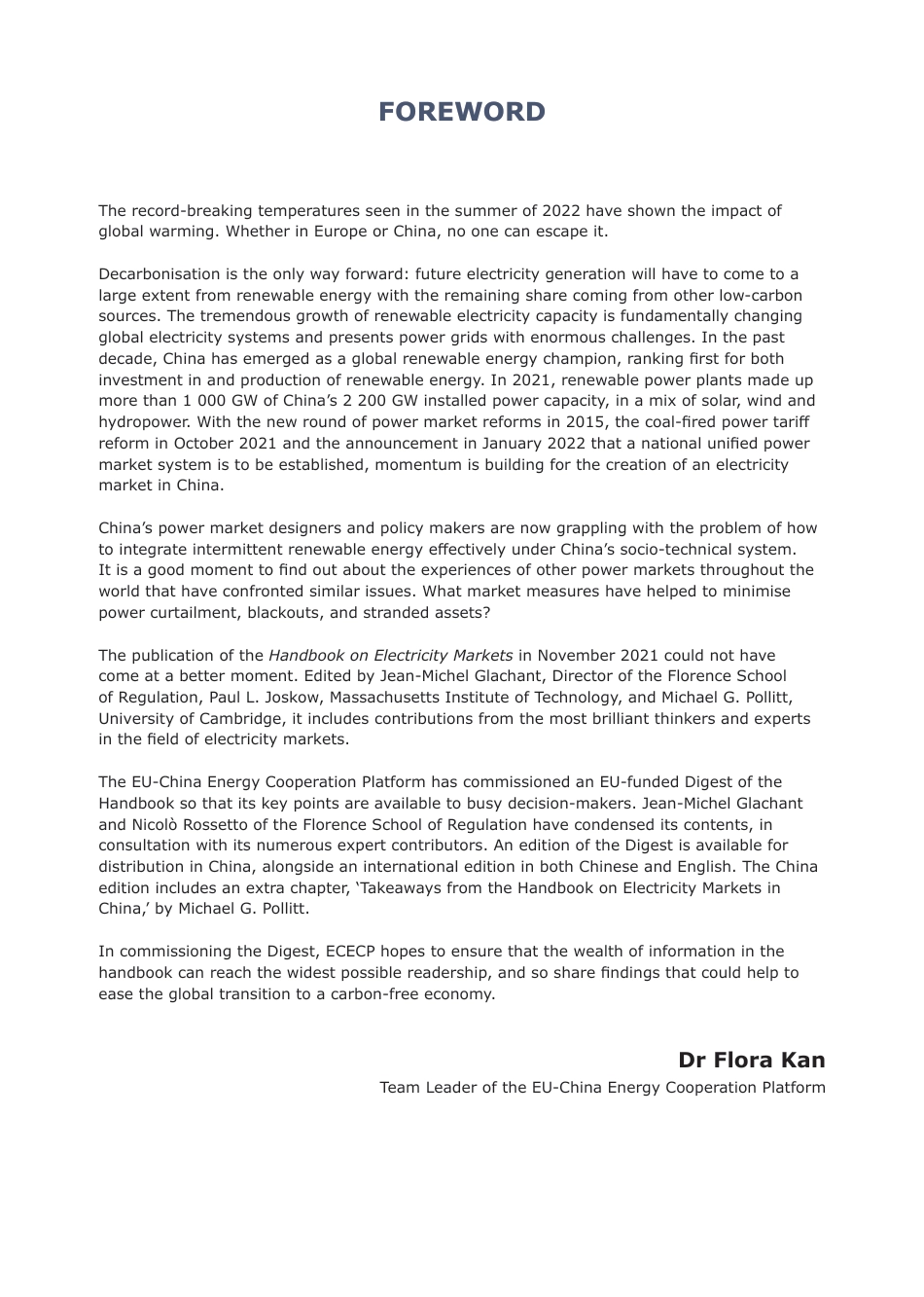Digest of theThis digest was prepared by:Jean-Michel Glachant, Florence School of RegulationNicolò Rossetto, Florence School of Regulationwith generous support from the authors of the Handbook on Electricity Markets. LEGAL DISCLAIMER Chapter 1 and the book cover are included here in this digest with the permission from Edward Elgar Publishing Ltd. The information and views set out in this report are those of the author(s) and do not necessarily reflect the official opinion of the European Union. No guarantee can be given by the European Union for the accuracy of the data included in this study. The European Union or any person acting on their behalf cannot be held responsible for the use which may be made of the information contained therein. © 2022 European Union. All rights reserved.English editing: Helen Farrell, Chinese editing: Chi JieqiaoFOREWORDThe record-breaking temperatures seen in the summer of 2022 have shown the impact of global warming. Whether in Europe or China, no one can escape it. Decarbonisation is the only way forward: future electricity generation will have to come to a large extent from renewable energy with the remaining share coming from other low-carbon sources. The tremendous growth of renewable electricity capacity is fundamentally changing global electricity systems and presents power grids with enormous challenges. In the past decade, China has emerged as a global renewable energy champion, ranking first for both investment in and production of renewable energy. In 2021, renewable power plants made up more than 1 000 GW of China’s 2 200 GW installed power capacity, in a mix of solar, wind and hydropower. With the new round of power market reforms in 2015, the coa...



